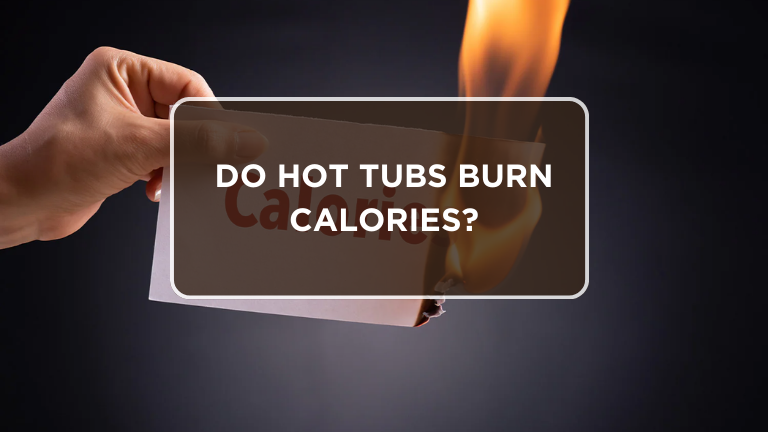Hot tubs are commonly associated with relaxation and therapeutic benefits, but can they also help you burn calories? The idea of lounging in a hot tub while shedding some pounds might sound too good to be true, but there is some scientific evidence suggesting that using a hot tub may contribute to minor calorie burning. However, it’s important to understand that hot tubs are not a substitute for exercise and won’t burn as many calories as more intense activities like running or swimming.
Let’s explore how hot tubs might impact calorie burning and what you can realistically expect from using one.
1. How Hot Tubs May Contribute to Calorie Burning
While you may not experience a major calorie burn from sitting in a hot tub, your body does expend energy to maintain a stable internal temperature in the hot water. When you immerse yourself in a hot tub, your body works harder to regulate its temperature in response to the heat, which can result in a slight increase in metabolism.
Thermogenesis
- What Is It? Thermogenesis is the process by which your body generates heat to maintain a stable core temperature when exposed to hot environments.
- How It Works: When your body is immersed in a hot tub, it reacts to the heat by attempting to cool itself down through mechanisms like sweating and increasing blood circulation. This process requires energy, leading to a small increase in calorie burn.
Research on Hot Tubs and Calories
A study published in the Journal of the American Medical Association (JAMA) in 2018 found that spending time in a hot tub could burn a modest number of calories. The study showed that a 30-minute soak in a hot tub (at around 104°F or 40°C) resulted in the burning of roughly 140-150 calories in a single session, which is similar to a low-intensity walk. This calorie expenditure is not significant compared to more active forms of exercise, but it is a form of energy expenditure.
2. Factors That Affect Calorie Burn in a Hot Tub
Several factors can influence how many calories you might burn while using a hot tub:
- Water Temperature: The hotter the water, the more your body has to work to regulate its temperature, which may slightly increase calorie burn. However, water that’s too hot could be uncomfortable or unsafe, so it’s important to stay within a safe temperature range (generally between 100°F to 104°F or 37.8°C to 40°C).
- Duration: The longer you spend in the hot tub, the more calories you could burn, as your body continues to regulate its temperature. However, excessive time in hot water can lead to dehydration and overheating, so moderation is key.
- Individual Factors: Your age, weight, and metabolic rate can all influence how many calories you burn. Larger individuals or those with higher metabolic rates may burn slightly more calories.
3. Hot Tubs and Relaxation
While the calorie burn is modest, hot tubs do have other health benefits that can indirectly help with weight management:
- Stress Reduction: Spending time in a hot tub can lower your cortisol levels (a hormone related to stress). Lower stress may help reduce emotional eating or improve sleep quality, both of which can contribute to better weight management.
- Improved Circulation: The heat from the water promotes increased blood circulation, which can aid in muscle recovery and reduce soreness after workouts, making it easier to maintain an active lifestyle.
- Better Sleep: Relaxing in a hot tub before bed may improve sleep quality, which is essential for overall health and weight management. Poor sleep is linked to weight gain and difficulty losing weight.
4. Limitations of Calorie Burning in Hot Tubs
While soaking in a hot tub can help burn a small number of calories, it should not be considered a weight-loss strategy on its own. The calorie burn from a hot tub is not significant enough to replace regular physical activity like exercise or a balanced diet.
To effectively burn calories and lose weight, it’s essential to combine healthy eating with regular exercise. Hot tubs can be a relaxing addition to a fitness regimen, but they are not a substitute for more active calorie-burning activities.
5. What You Should Know About Hot Tubs and Weight Loss
- Not a Substitute for Exercise: Using a hot tub will not replace the calories burned during activities like walking, running, cycling, or strength training.
- Potential Weight Loss Benefits: If used as part of a broader wellness routine, hot tubs may contribute to relaxation, improved sleep, and stress management, all of which play a role in weight loss and overall health.
- Safety First: Always ensure the water temperature is safe for you. Prolonged exposure to excessively hot water can lead to dehydration, dizziness, or overheating, so limit your time in the hot tub to 20-30 minutes at a time.
Conclusion: Do Hot Tubs Burn Calories?
Yes, hot tubs can burn a small number of calories due to the thermogenic effects of heat exposure. However, the number of calories burned is minimal and not enough to replace regular exercise or a healthy diet. While hot tubs are great for relaxation, stress relief, and muscle recovery, they should be viewed as a supplement to a healthy lifestyle rather than a primary method for weight loss.
For more significant calorie burning and weight loss, combine hot tub use with other forms of physical activity, a balanced diet, and adequate rest to achieve your health and fitness goals.

